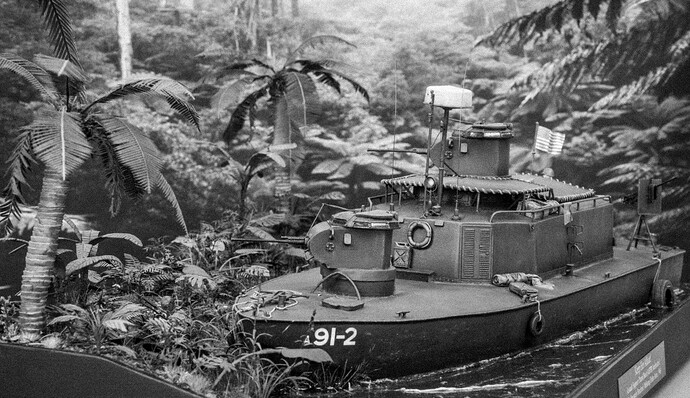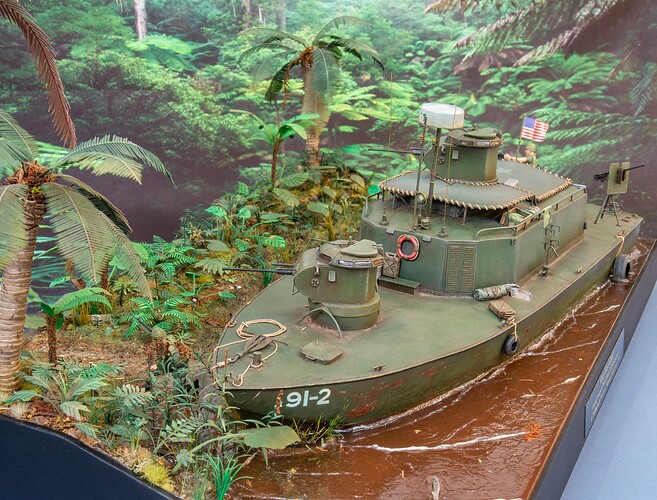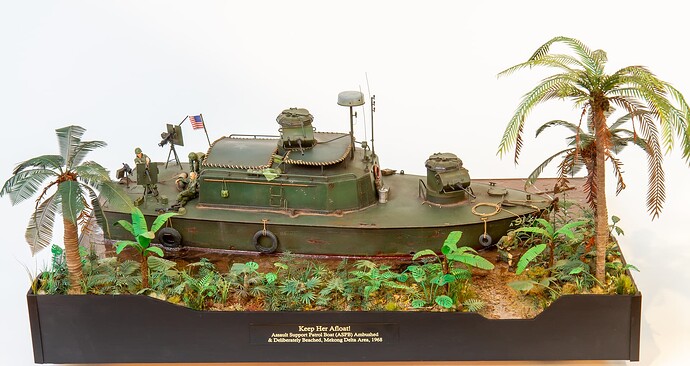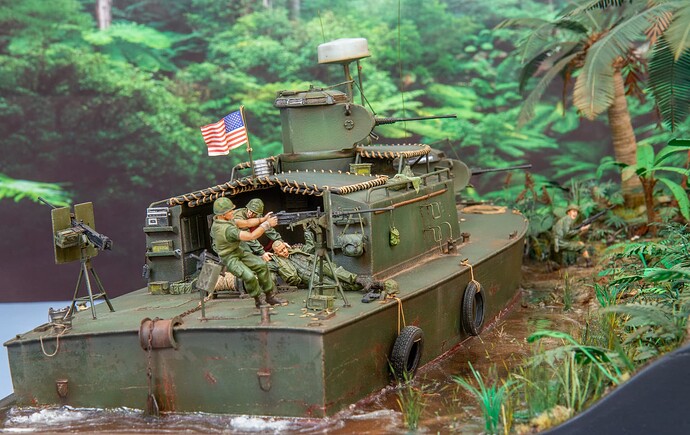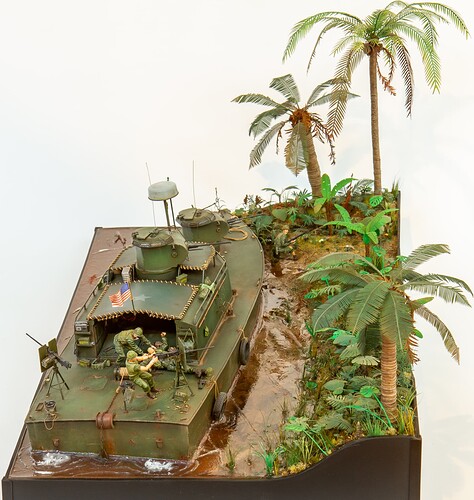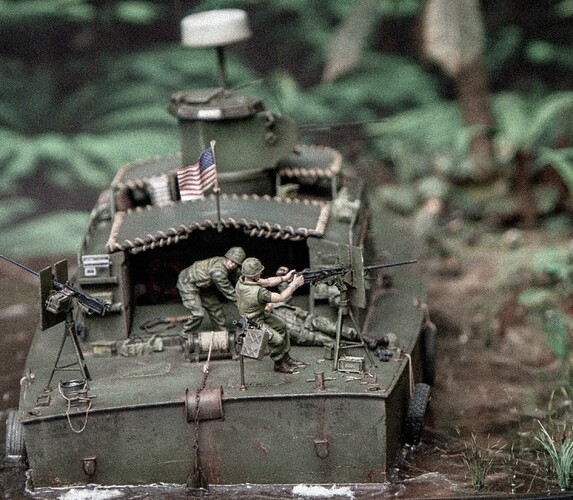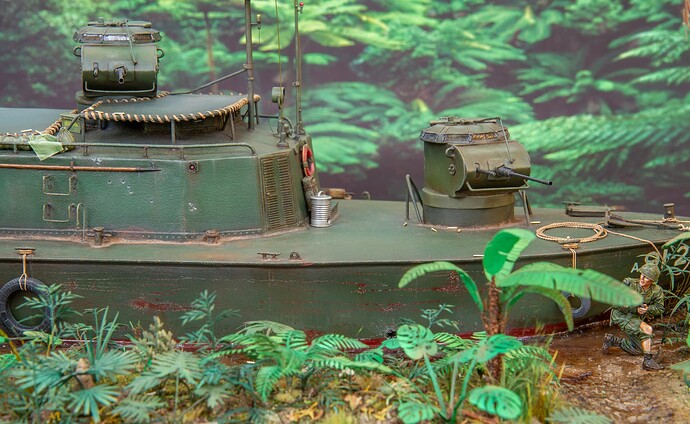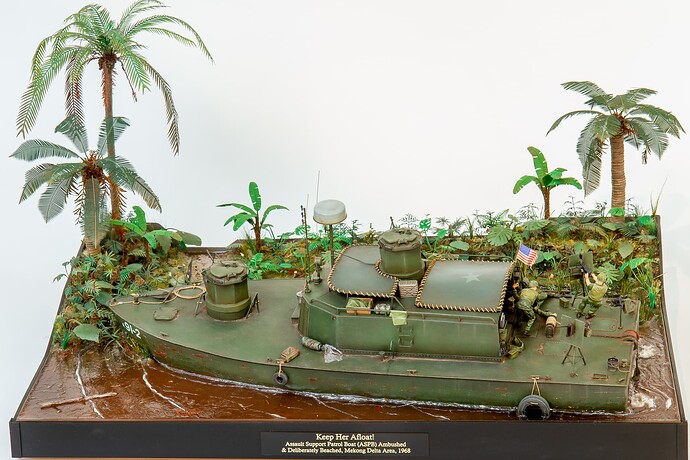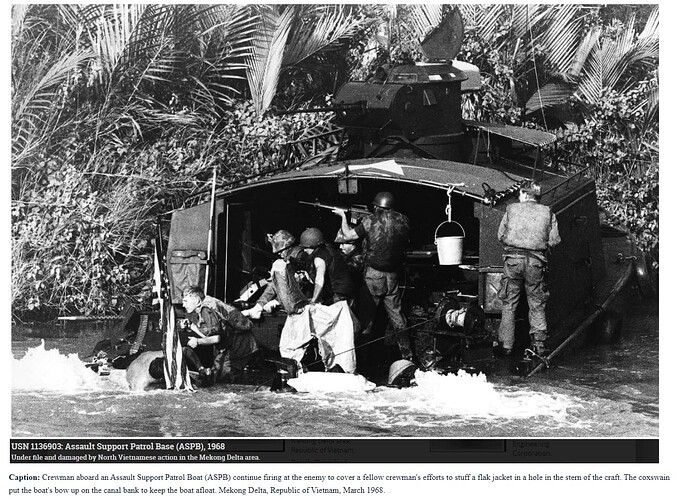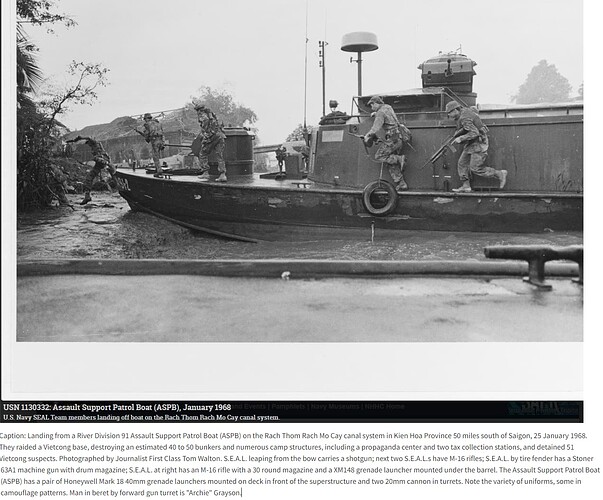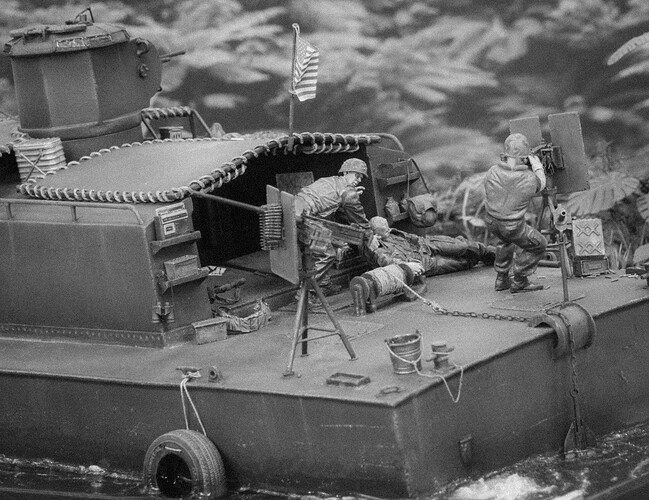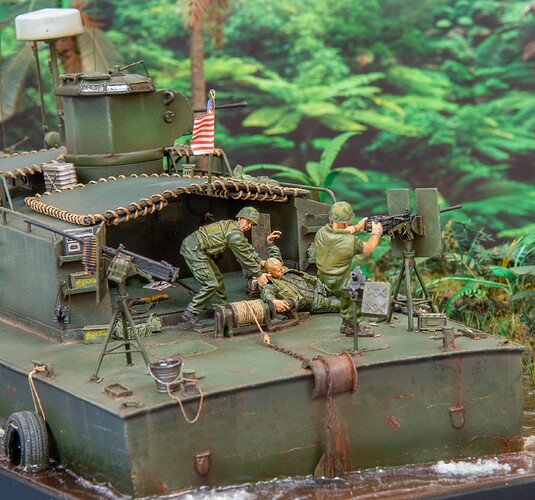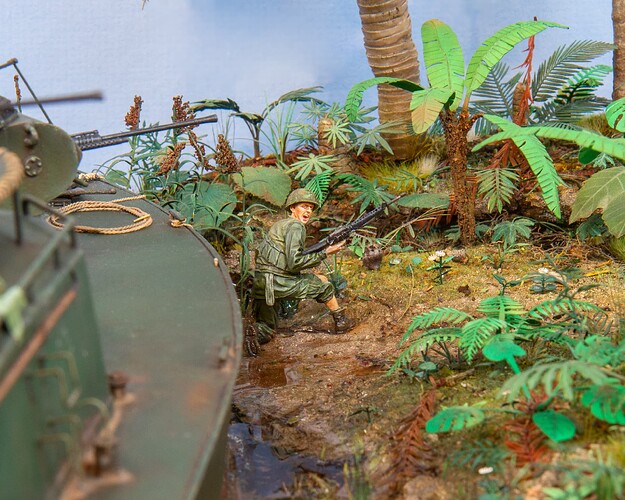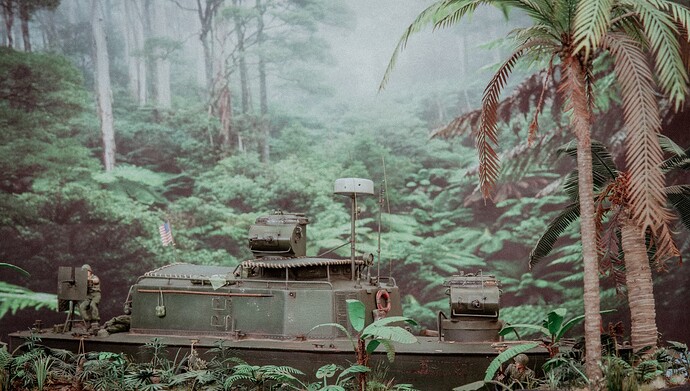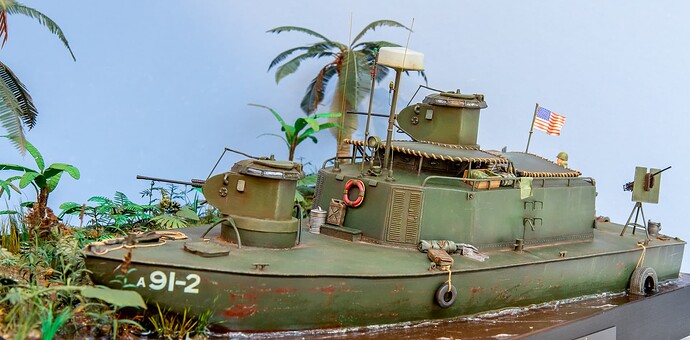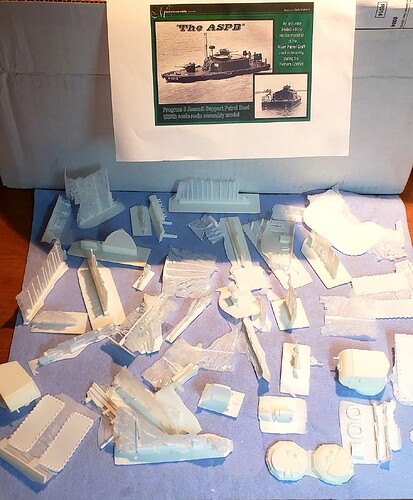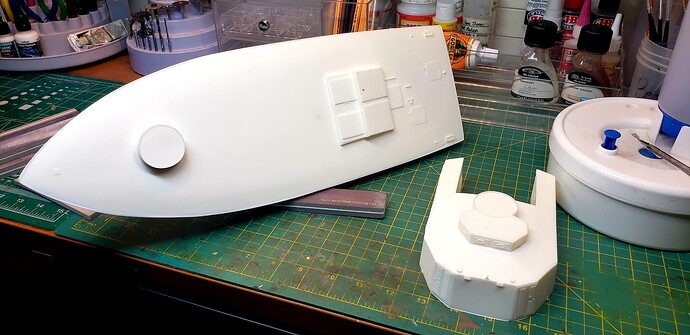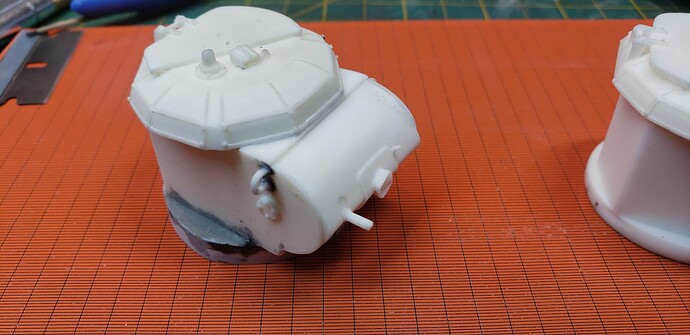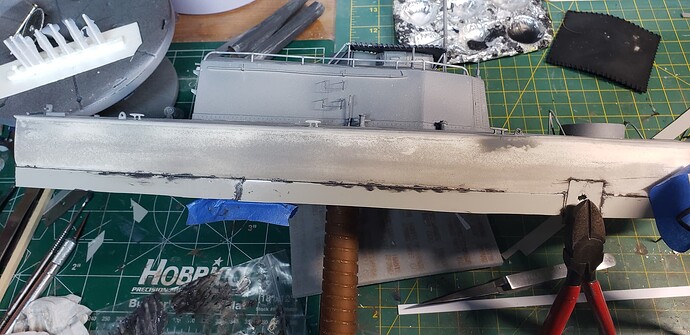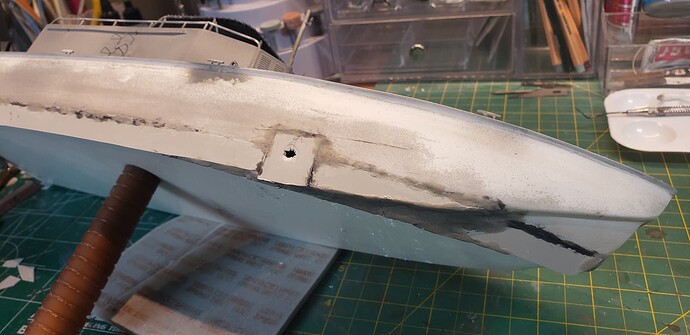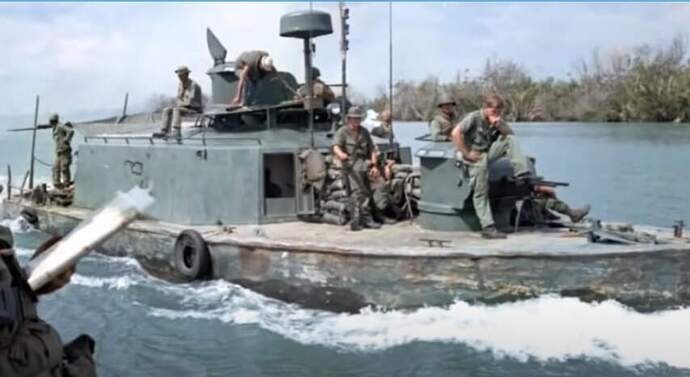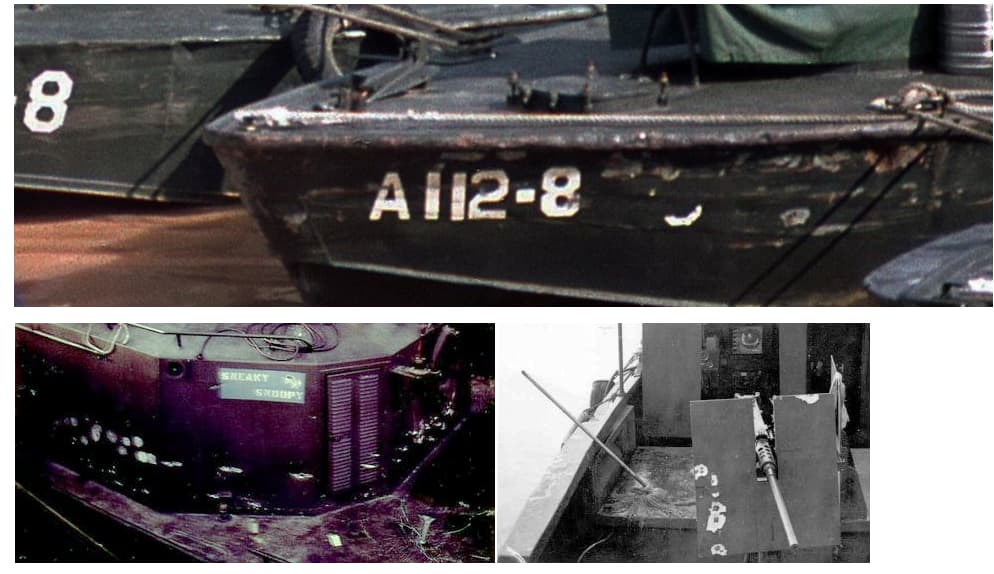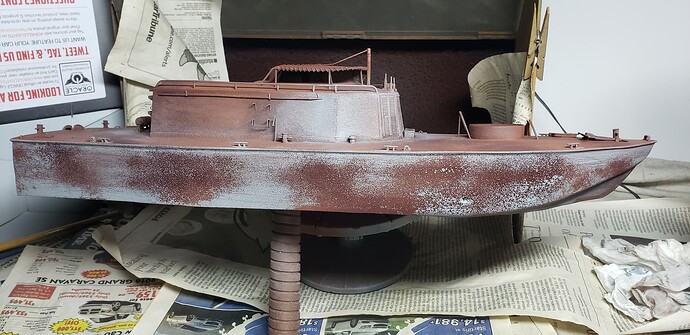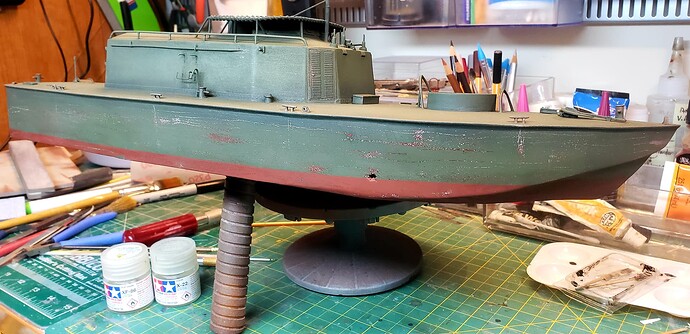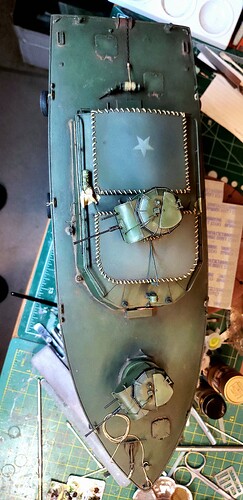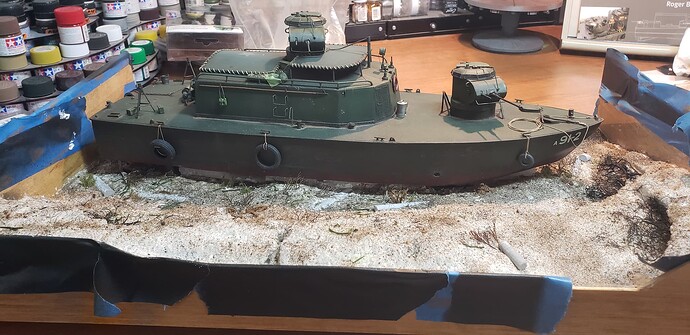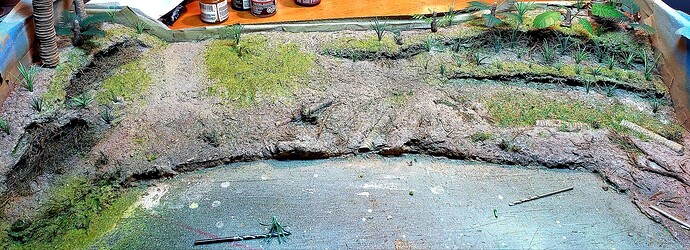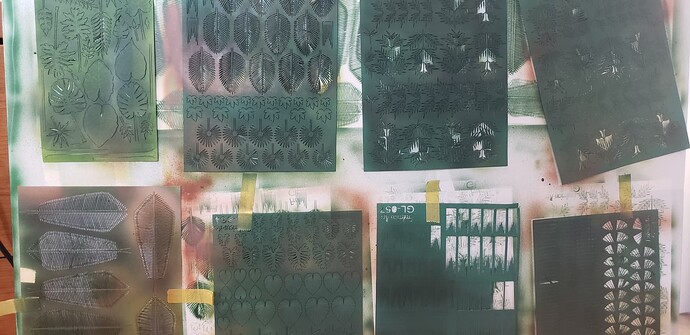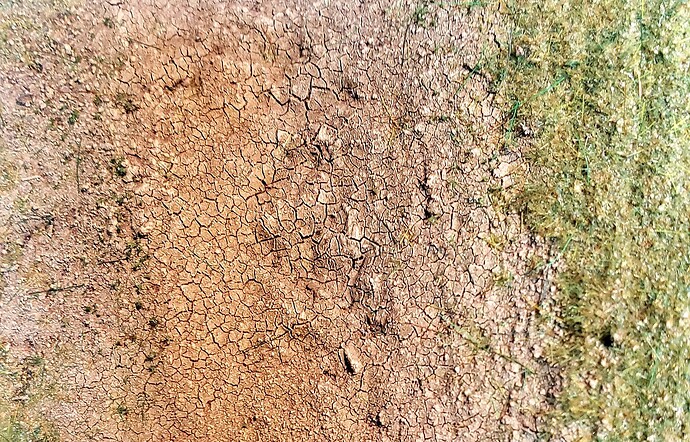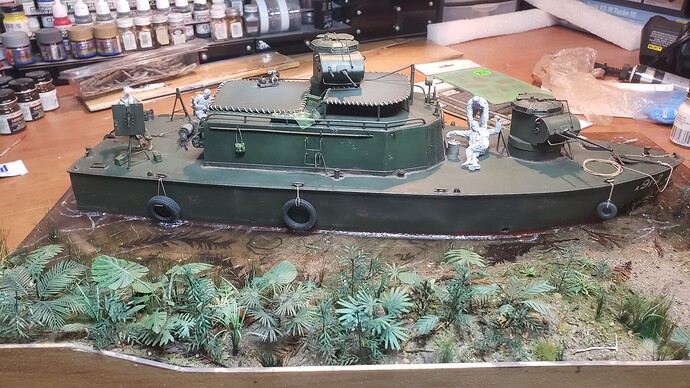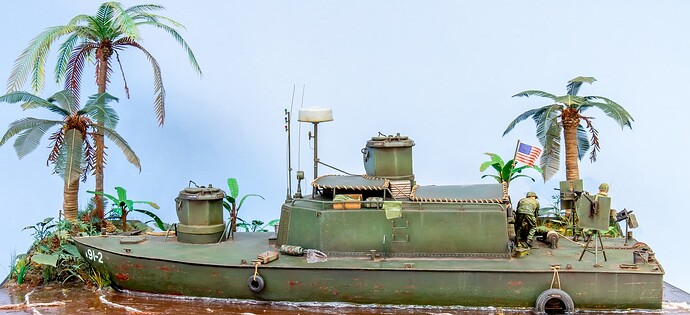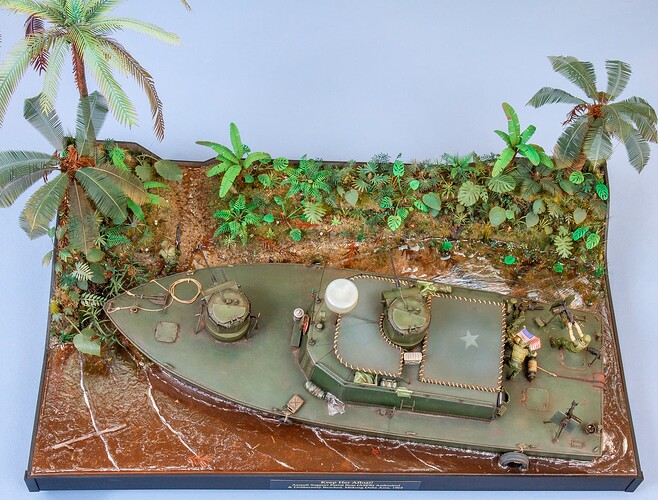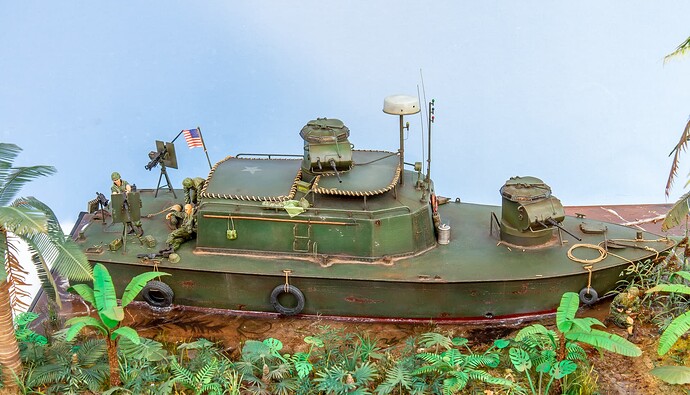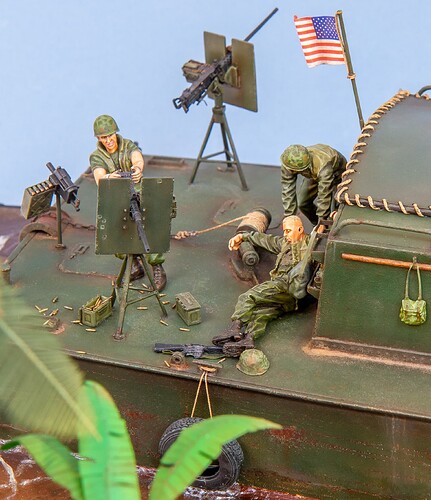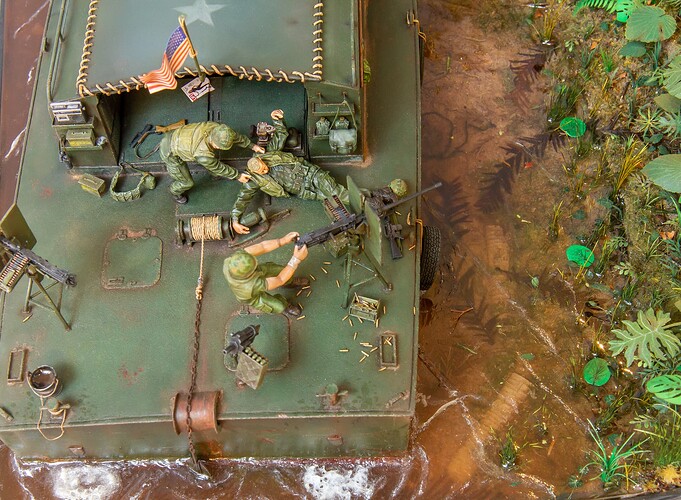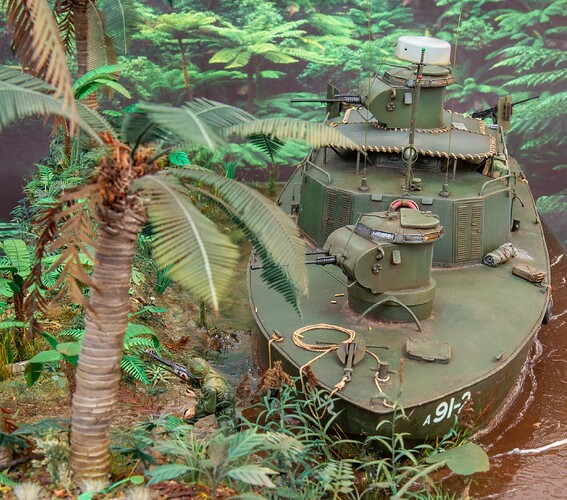I just completed a nearly 2 year project of a Brownwater Navy Assault Support Patrol Boat (ASPB) in Vietnam, Mekong Delta area in 1968. I hope I am putting this in the right category as this boat is basically a floating AFV, is in 1/35th scale, and was built similar to an AFV diorama scene ![]() . Anyway, I have a few pics to share of the completed project, as well as some older WIP images that I may add in a separate post.
. Anyway, I have a few pics to share of the completed project, as well as some older WIP images that I may add in a separate post.
To decide on finish, layout, and environment, I found a couple of good resources from both the internet ((www.browaternavy.com, www.history.navy.mil/content/history/museums/nmusn.html, and www.revervet.com, as well as U. S. Small Combatants, including PT-Boats, Subchasers, and the Brown-Water Navy by Norman Friedman. The internet sites actually listed some vets that contributed to the sites due to their past experience on the ASPB. I decided to email a few with inquiries to learn more of their story and equipment. I was lucky that Samuel Crawford responded, who is actually the author of his own book called Brown Water, Getting There is Half the Fun (https://www.amazon.com/Brownwater-Getting-There-Half-Fun/dp/1401054633) . After I explained to Sam what I was working on, he was kind enough to share his experience as well as personal photos. I am looking forward to sending this link for Sam to see for himself!
Due to their steel construction and armor, the boats (also called Alpha Boats) would also perform minesweeping in advance of river assault squadrons and serve as a blocking and interception force in the waterways around the area of operation. The ASPBs were known as delta destroyers because of their speed and firepower. In retrospect, the speed was almost irrelevant, as formations were only as fast as their slowest components, the 6-knot armored troop carriers (ATC). The first ASPB (Program 4) arrived at Vung Tau on September 20, 1967. Fifty program 5 ASPBs, which this subject is modeled after, were delivered to Vietnam after January 1968. The ASPBs first saw action on 28 September 1967 during Operation Coronado V when they were used as minesweepers for an assault on An Dinh village, the “birthplace” of the Viet Cong (Friedman, 1987). The following list includes some of the actions that the ASPBs were involved in that heavily influenced this build (National Museum of the U.S. Navy):
-
On March 1, 1968, A-112-8 and M-112-1 were hit by several B40 rockets in the Can Tho River while covering the salvage of A-112-4, which sunk on February 27. A-112-8 took a direct B40 hit in her engine cover and had to be towed back. A-112-4 was recovered and towed to Can Tho on March 4.
-
On March 14, 1968, A-92-7 sank on the Sam Giang River after a rocket hit it directly on the stern below the waterline. Salvage was not feasible, so the boat was stripped and destroyed in place by an explosive ordnance disposal team.
-
Eleven river assault craft were damaged on April 4 1968. A-92-1 and A-92-4, which suffered the most, were hit by a total of six RPG-7s. These were direct hits on .50-caliber mounts. In the same action, M-92-2 was hit by a heat round that penetrated the opening between the 20mm and .50-caliber mounts, killing the captain and coxswain. During this same engagement an ATC took an RPG-7 round through its bow ramp, which severed the ramp winch cable and wounded thirty army personnel in the well deck. Another ATC was hit near the waterline by an RPG-7. It triggered on bar armor, penetrated the bulkhead, and created a shrapnel effect in the empty well deck.
This scene depicts a ASPB Boat assigned to patrol the Mekong Delta area in 1968 during a Mobile Riverine Force search and destroy mission. During these missions it was common that other troops (such as SEALS, Marines, or Army Regulars) ride along for support or near shore missions. Like some of the encounters listed above, I wanted to depict a rocket attack on the hull of the ship near the waterline, which temporarily caused the crew to beach in order to asses the damage, fight off remaining attackers, and/or possible repair it enough to get on their way. A similar event actually happened, as shown in the scene below where a crew member lodged his flak jacket into a hole in the stern, all while under heavy fire (images are from website of National Museum of the U.S. Navy).
The kit is a 1/35th scale resin kit by Masterpiece Models (SKU: MMVN007). I was excited to try this kit since I primary build 1/35th scale armor and knew there were a lot of accessories in this scale I could add to produce the scene I was after. But at 1/35th scale, this was a big kit and it was my first full resin model so I had my work cut out for me. The two largest pieces, hull and superstructure were fine, albeit required a lot of sanding to smooth out. However, this is only a waterline model which was going to require heavy modding in order to add battle damage and extend the hull since a large area would be visible through the semi-opaque resin water. (more on that later). The main items in the kit that needed correcting were gun barrels, handrails, antennas, etc. as the ones in the kit were warped and had a lot of rolling imperfections that could not be sanded free. I am not sure if the molds were aging when this kit was produced but needless to say, it needed a lot of work. I ended up replacing most of the railing, pipes, ladders etc using either Plastruct tubing or metal wire. Gun barrels were replaced with aftermarket sources (listed below). Finally, I broke down and purchased Tamiya’ s PBR “PIPPER” kit for many of its parts such as figures, tires, flag, antennas, containers, etc. It was a wealth of extra accessories that fit well with this larger Brownwater subject. In summary, the extra kits used to complete the scene included:
- Tamiya PBR 31Mk.II “PIPPER”
- Live Resin LRE-25246 M2HB Browning 0.50 with ammo boxes
- 30 caliber and 20 mm metal barrels (forgot source)
- Bravo 6 USMC Figures: F6-35028 and B6-35036
I will post some WIP pics in another post. I have other pics if interested as well.
